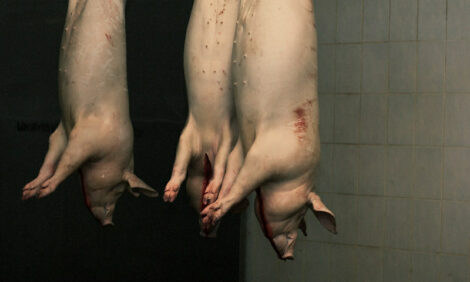



Researchers Evaluate Impact of Stall Size on Reproductive Productivity
CANADA - Farm-Scape: Episode 1545. Farm-Scape is a Wonderworks Canada production and is distributed courtesy of Manitoba Pork Council and Sask Pork.  Farm-Scape is sponsored by
Manitoba Pork Council and Sask Pork  Play Audio Play AudioFarm-Scape is a Wonderworks Canada production and is distributed courtesy of Manitoba Pork Council and Sask Pork. |
Farm-Scape, Episode 1545
Scientists at the Prairie Swine Centre have kicked off a two and a half year study to assess the effect of stall size on the productivity of the breeding herd.
Although gestation stalls provide the breeding sow protection from other animals, they do limit movement and that limitation increases as the sow grows larger.
Research Scientist in Ethology Dr. Harold Gonyou says the sow will double its weight during its reproductive life and will spend less time lying and more time sitting or standing, suggesting a lack of comfort.
"One of the suggestions has been that stalls should be wide enough that animals can comfortably stand up and lie down in them but, when they are lying down, they should not be forced to lie in contact with both sides.
That is there should be space that they can just lie against one side or that their udder does not protrude into the next stall.
We've now been comparing the behavior of the animals in different widths of stalls as they grow.
We find that we see similar behavior in gilts in 22 inch stalls as what we'll see in 24 inch stalls with second and third parity animals, in 26 inch stalls for the third and fourth parity animals.
Animals that are older than that, 5th or 6th partiy animals, it seems that they need a 28 inch stall to have a similar behavior pattern as we see in the gilts.
Based on that, we're suggesting we really should be increasing the size of our stall as the sows grow".
Dr. Gonyou says research underway now will look at sows housed in different size stalls over six reproductive cycles to assess the impact of stall size on productivity.
He says scientists will track injury levels, levels of stress, reproductive rates including number of pigs born and number of pigs born alive and longevity.
Results are expected by the summer of 2006.
For Farmscape.Ca, I'm Bruce Cochrane.






